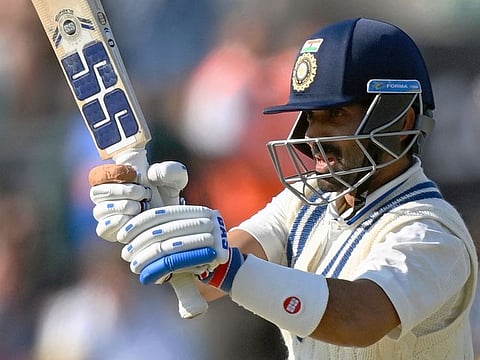World Test Championship cricket: Why India can’t win the final against Australia
Australian batters and bowlers performed better than the Indians at The Oval

First innings scores generally dictate the tone of a cricket Test. True, there have been games that were turned around in the second innings. That’s not often the case. An imposing total puts pressure on the team batting second, and bowlers have the luxury of operating with attacking fields.
This is precisely the scenario in the World Test Championship final at The Oval. Australia’s 469 straightaway pushed India on the backfoot, and with every falling wicket the pressure rose. Now at 151/5, India are struggling to ward off follow-on, which is 118 runs away — a tough prospect since Ajinkya Rahane is the lone recognised batsmen. Srikar Bharat and Shardul Thakur will have to lend him support to make Australia bat again.
Australia will bat again, even if India fall short of the follow-on mark of 269. That’s because the pitch is becoming unpredictable. The Australian bowlers extracted steep bounce with their high-arm delivery points, but some balls have kept low too.
Why the pitch bounce will be a factor
Mitchell Starc surprised Virat Kohli with a delivery that took from a length, and the Indian batter could only glove it to slips. In another over, the Australian left-arm pace bowler sent down a grubber that shot past Rahane at ankle level; fortunately it wasn’t in line with the stumps.
The up-and-down bounce of the pitch will be a major factor in the last three days. And off-spinner Nathan Lyon may be a bigger threat, the Australian’s dismissal of Ravindra Jadeja was ominous. It was a classic off-break bowler’s dismissal: the flighted delivery drifts in and spins away, catching the edge of bat as the batter shapes to defend. It underscored India’s grave error in omitting Ravichandran Ashwin. On a pitch of variable bounce, he could have been a potent weapon.
Even Jadeja could exploit such a strip. That’s why the Australians would want to avoid batting last on this wicket even in the absence of Ashwin.
Where did India go wrong? The fast bowlers, barring Umesh Yadav, did well enough to justify skipper Rohit Sharma’s decision to bat first. They grabbed wickets and piled pressure on the Australians with a superb exhibition of swing bowling. But they erred occasionally, allowing David Warner and Travis Head to cash in on some big overs, which released the pressure.
Head made the difference with his counter-attacking innings, the sort of knock Rishabh Pant plays for India. India’s short-ball strategy against the Australian batter was activated only after 65 overs when Head was in the nineties. His discomfiture against the rising ball has been apparent all along. Why didn’t the Indian bowlers target him earlier? That’s a mystery as puzzling as Ashwin’s omission.
More mystery followed. Shubman Gill and Cheteshwar Pujara are two of India’s technically accomplished batters, yet they fell in outrageous fashion: leaving deliveries that swung in past their front pads to clip the off stump. Strange indeed. This happens rarely in Tests. Certainly not twice in an innings. That summed up India’s plight.
Now that India have surrendered the advantage, the focus is on a good second innings effort. That won’t be easy on this pitch. Which means the Test looks as good as over for India. But this is Test cricket. Stranger things have happened. Well, that’s hoping against hope.
What’s clear is that Australia have outbatted and outbowled India. Can India turn the tables on Australia? My guess is as good as yours.
Sign up for the Daily Briefing
Get the latest news and updates straight to your inbox




